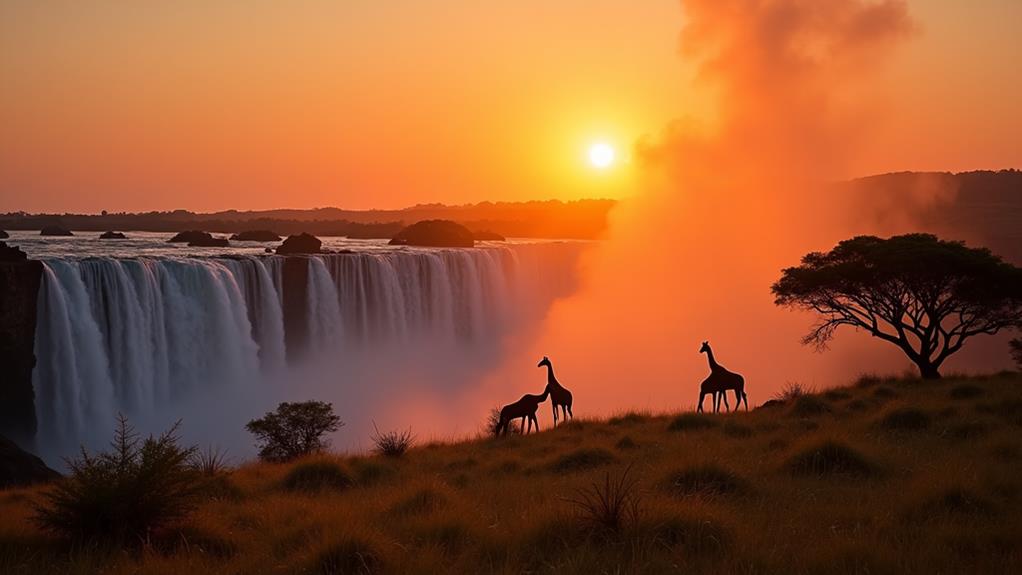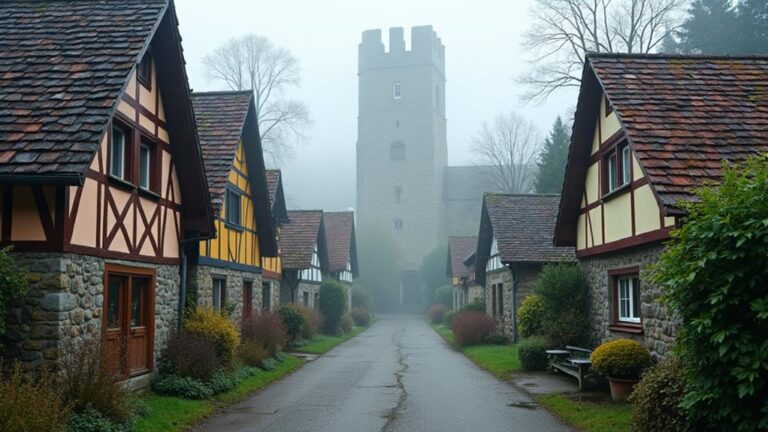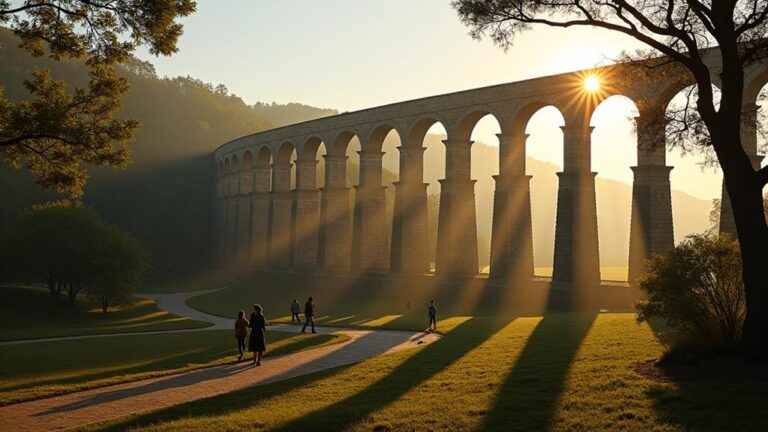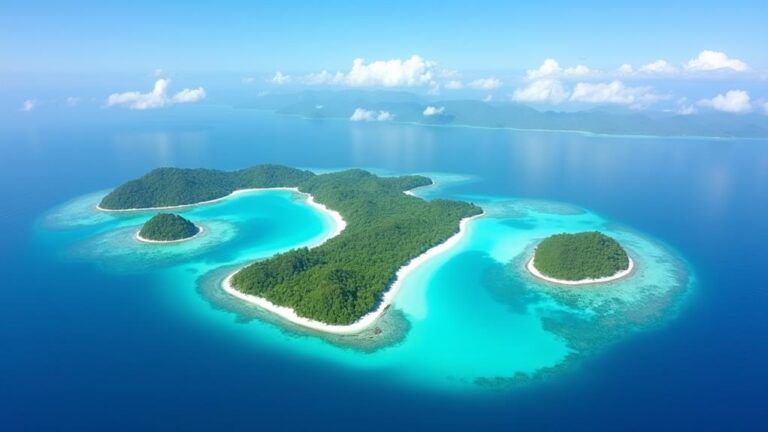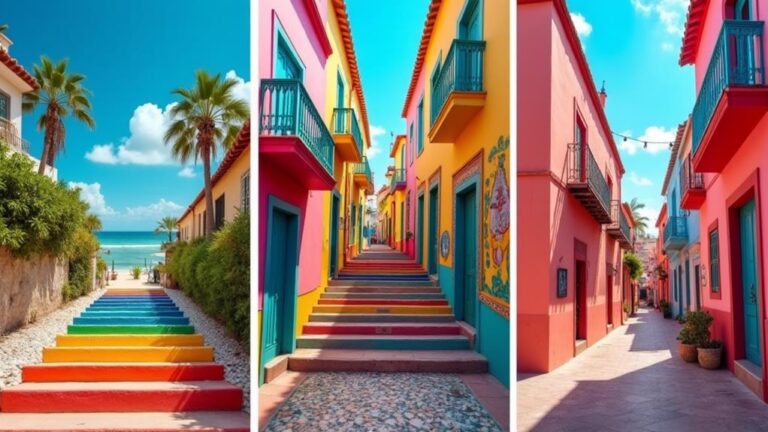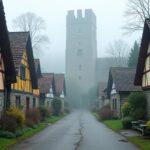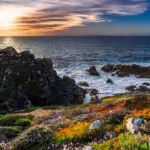You're planning a trip to South Africa and Victoria Falls, and you're wondering when to go. The answer depends on what you're looking for. If you're a wildlife enthusiast, the dry season from May to October is ideal for game viewing. However, this period also coincides with the peak tourist season, which may not be ideal for those who prefer smaller crowds. As you consider your options, there's more to think about – the water levels at Victoria Falls, the varying climates across South Africa, and the shoulder season benefits. What's the perfect time for your trip?
Contents
Key Takeaways
- The dry season, May to October, is ideal for game viewing in South Africa, with animals congregating around water sources.
- Victoria Falls' peak flow season, February to May, offers the most spectacular views, with 10,000 cubic meters of water per second.
- The shoulder season, April to June or September to November, balances pleasant weather and manageable crowds in South Africa.
- Visiting during the shoulder season in Victoria Falls allows for walking along the edge of the falls and exploring the surrounding landscape.
- The best time for the Great Migration in South Africa is between April and June, while in Victoria Falls, it's from July to September.
South Africa's Climate Zones
As you plan your trip to South Africa, it's essential to understand the country's diverse climate zones.
South Africa boasts a wide range of climate types, from Mediterranean to subtropical, temperate, and desert. The country's geography plays a significant role in shaping its climate, with the Atlantic and Indian Oceans exerting a moderating influence on temperatures.
The western coast of South Africa has a Mediterranean climate, characterized by mild winters and warm summers.
In contrast, the eastern coast is subtropical, with hot and humid summers.
The interior of the country experiences a temperate climate, with cold winters and warm summers.
The Kalahari Desert in the northwest is arid and hot, with very little rainfall.
Microclimates are also present within each climate zone, influenced by factors such as elevation, distance from the coast, and vegetation.
For example, the mountainous regions of the Western Cape experience a milder climate than the surrounding low-lying areas.
Understanding South Africa's climate zones and microclimates will help you prepare for your trip and make the most of your time in this beautiful country.
Best Time for Game Viewing
If you're planning a game viewing trip to South Africa and Victoria Falls, timing is everything.
You'll want to visit during the dry season, when sparse vegetation and water scarcity make it easier to spot wildlife, and many animal species migrate to specific areas in search of sustenance.
This period, which typically falls between May and October, also coincides with peak tourist season, so be prepared for larger crowds and higher prices.
Dry Season Advantages
During the dry season, typically from May to October, most of South Africa and Victoria Falls' water sources dry up, leaving only a few reliable spots for animals to quench their thirst. This makes the dry season an ideal time for game viewing, as animals congregate around these water sources.
| Month | Weather Conditions | Game Viewing |
|---|---|---|
| May | Mild temperatures, dry landscapes | Excellent, as animals start to congregate around water sources |
| June | Cool temperatures, low humidity | Good, with animals becoming more active during the day |
| July | Cold temperatures, dry landscapes | Excellent, with animals frequenting water sources |
| August | Mild temperatures, dry landscapes | Excellent, with high concentrations of animals around water sources |
In preparation for your safari during the dry season, make sure to pack warm clothing for the cooler mornings and evenings. Bring binoculars and a camera to capture the incredible game viewing opportunities. The dry landscapes also make it easier to spot animals, as the vegetation is less dense. With proper safari preparation, you'll be well on your way to an unforgettable experience in South Africa and Victoria Falls.
Animal Migration Patterns
What drives the majestic animals of South Africa and Victoria Falls to migrate to specific regions, and how can you time your safari to catch these incredible movements?
The answer lies in understanding the delicate balance between food availability, water sources, and predator avoidance.
As you plan your safari, knowing the animal migration patterns can greatly enhance your game viewing experience.
In South Africa, the Great Migration of wildebeest, zebras, and antelopes takes place between April and June, while in Victoria Falls, the large herds of buffalo, elephants, and antelopes can be seen from July to September.
Witnessing these wildlife spectacles is a thrilling experience, but it's essential to debunk migration myths.
Contrary to popular belief, animal migrations aren't fixed events, but rather dynamic movements influenced by environmental factors.
Peak Tourist Season
South Africa and Victoria Falls experience distinct seasons that greatly impact game viewing.
The peak tourist season, which typically runs from June to August, offers the best time for game viewing. During this period, the dry winter months make it easier to spot animals as they congregate around water sources.
However, this season comes with its drawbacks. Expect large crowds and long queues at popular attractions, making crowd management a challenge.
Tourist traps also become more prevalent during peak season, so it's essential to research and plan carefully to avoid overpriced and underwhelming experiences.
On the other hand, the peak season offers better infrastructure and amenities, including guided tours and game drives. If you're looking for a more exclusive experience, consider visiting during the shoulder season, which offers a more relaxed atmosphere and lower prices.
Nevertheless, if you're willing to brave the crowds, the peak season offers unparalleled game viewing opportunities. Just be prepared to plan ahead, book early, and take necessary precautions to avoid the downsides of peak tourist season.
Victoria Falls Water Levels
Victoria Falls Water Levels
Witness the sheer force of Victoria Falls at its peak or experience the tranquil surroundings during its dry season – you're in for a treat either way. The water levels at Victoria Falls vary significantly throughout the year, impacting your experience. Understanding these fluctuations will help you plan your trip.
| Season | Water Flow |
|---|---|
| Peak (Feb-May) | 10,000 m3/s |
| Shoulder (Jun-Aug) | 1,000-3,000 m3/s |
| Dry (Sep-Jan) | 350-1,000 m3/s |
| High Water (Feb-Apr) | 9,000-10,000 m3/s |
| Low Water (Nov-Jan) | 350-400 m3/s |
During the peak flow season, the falls are at their most spectacular, with a massive 10,000 cubic meters of water per second. This is ideal for thrill-seekers who want to experience the sheer force of the falls. On the other hand, the dry season offers a more serene atmosphere, allowing you to walk along the edge of the falls and explore the surrounding landscape. Keep in mind that the water flow affects the falls' mist, which can impact your visibility and photography opportunities.
Optimal Weather Conditions
As you plan your visit to South Africa and Victoria Falls, you'll want to consider the optimal weather conditions for your trip.
The dry season, which typically runs from May to October, offers clear skies and mild temperatures, making it an ideal time to explore the region.
However, the wet season, which brings heavy rainfall from November to April, can have significant implications for your travel plans, and it's essential to understand these differences to make the most of your trip.
Dry Season Conditions
During the dry season, from May to October, you'll experience optimal weather conditions in South Africa and near Victoria Falls.
The days are mild and sunny, with clear blue skies, while the nights are cool and comfortable. This is the perfect time to explore South Africa's diverse landscapes, from the arid desert landscapes of the Kalahari to the scenic vistas of Table Mountain.
The dry season is also an ideal time for outdoor activities, such as hiking and wildlife watching.
The dry conditions make it easier to spot animals, as they congregate around water sources, making for exciting game viewing experiences. The scenic vistas of the Western Cape, with its picturesque mountains and coastlines, are also at their best during this time.
In the evenings, you can enjoy the comfortable temperatures, ranging from 10°C to 20°C (50°F to 68°F), making it ideal for exploring cities like Cape Town and Johannesburg.
Wet Season Implications
The dry season's pleasant weather conditions have a flip side – a wet season that can significantly impact your travel plans in South Africa and near Victoria Falls.
From November to March, the region experiences a wet season, bringing with it heavy rainfall and wet landscapes. While this might deter some travelers, it can also present unique opportunities for rainy adventures and witnessing the region's natural beauty in full bloom.
During the wet season, Victoria Falls is at its most spectacular, with water levels rising dramatically to create an awe-inspiring display of power and beauty.
However, this also means that some viewpoints and hiking trails may be closed due to flooding.
In South Africa, the wet season can make wildlife viewing more challenging, as animals tend to disperse during this time.
Nevertheless, the lush landscapes and vibrant greenery can create a serene and picturesque atmosphere, perfect for those seeking a more relaxed and peaceful experience.
Regional Variations in South Africa
South Africa's diverse regions offer you a unique experience, from world-class wine country in the southwest to wildlife-rich savannas in the northeast. You'll encounter distinct cultural differences as you travel through the country, shaped by the varied history, climate, and geography of each region. The Cape Winelands, for instance, have a strong European influence, while the coastal routes along the Indian Ocean have a more laid-back, tropical vibe.
| Region | Characteristics |
|---|---|
| Garden Route | Lush forests, scenic coastline, and mild climate |
| Karoo | Semi-arid desert, vast open spaces, and star-filled skies |
| KwaZulu-Natal | Tropical coastline, vibrant culture, and Zulu heritage |
| Western Cape | World-class wine country, stunning natural beauty, and cosmopolitan cities |
As you explore South Africa's regional variations, consider the time of year and how it affects each area. The climate can vary significantly from one region to another, with some areas experiencing mild winters and hot summers, while others are more temperate. Be sure to research the specific conditions for your desired destination to make the most of your trip.
Avoiding Peak Tourist Season
If you're planning a trip to South Africa and Victoria Falls, you'll want to consider visiting during the shoulder or off-season to avoid peak tourist season, which typically takes place from mid-December to mid-January and July to August.
Peak tourist season can be overwhelming, with crowded attractions, higher prices, and long queues.
Visiting during the off-season can be beneficial for several reasons:
- Lower prices for accommodations, flights, and tour packages
- Fewer crowds, allowing for a more peaceful and immersive experience
- Opportunities to interact with locals and experience the authentic culture
- A greater sense of adventure, as you explore the region without the crowds
Shoulder Season Travel Benefits
Most travelers find that visiting South Africa and Victoria Falls during the shoulder season offers the perfect balance between pleasant weather and manageable crowds.
You'll often have a more relaxed experience exploring popular attractions without the chaos of peak season.
During the shoulder season, you can enjoy lower prices for accommodations and tours, making it an ideal time for budget-conscious travelers.
Additionally, you're more likely to engage with locals, as the smaller crowds create a more intimate atmosphere, perfect for cultural immersion.
You might find yourself chatting with a local artist at a market or sharing a meal with a fellow traveler at a cozy café.
Visiting during the shoulder season also comes with travel rewards, such as shorter queues and easier access to popular attractions.
Imagine being able to take in the breathtaking views of Victoria Falls without the crowds, or exploring the vibrant city of Cape Town without long wait times.
Special Events and Festivals
As you plan your trip to South Africa and Victoria Falls, consider timing it with one of the many special events and festivals that take place throughout the year.
These events offer a unique opportunity to experience the rich culture, vibrant music, and stunning natural beauty of the region.
Some of the top festivals and events to look out for include:
- Cape Town Jazz Festival: A world-renowned jazz festival that takes place in Cape Town, featuring local and international jazz musicians.
- Afropunk Festival: A celebration of African culture, fashion, and music, held in Johannesburg and Cape Town.
- Cape Town International Film Festival: A showcase of local and international films, with a focus on African storytelling and talent.
- Victoria Falls Carnival: A fun-filled event that takes place in Victoria Falls, featuring live music, food, and adventure activities.
Timing your trip with one of these events can add an extra layer of excitement and cultural immersion to your journey.
Be sure to plan ahead, as these events can draw large crowds and accommodation may fill up quickly.
Conclusion
As you plan your trip to South Africa and Victoria Falls, coincidentally, the timing of your visit can make all the difference. Visiting during the dry season may mean witnessing the majestic wildlife gathering around water sources, but it also means sharing the experience with crowds. On the other hand, the shoulder season offers a more relaxed atmosphere, and lower prices. You'll find your perfect time, whether it's for game viewing, peaceful immersion, or a mix of both.

